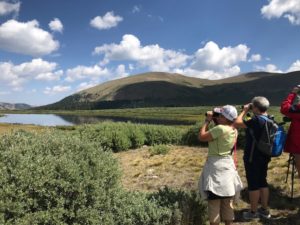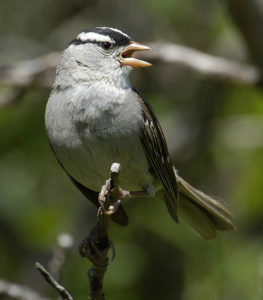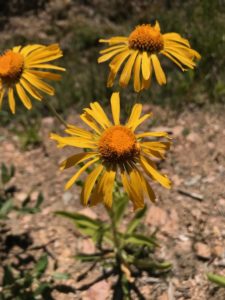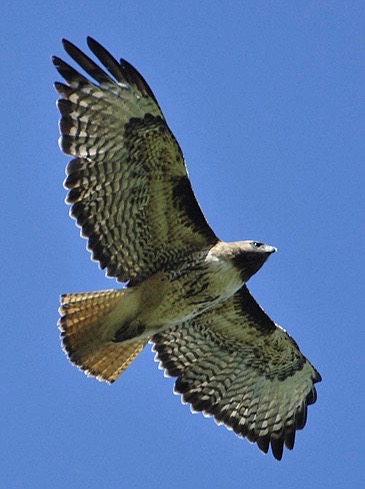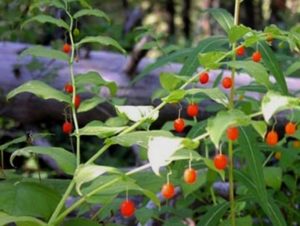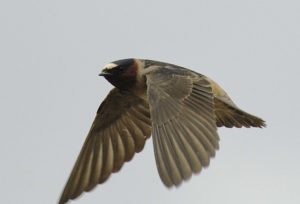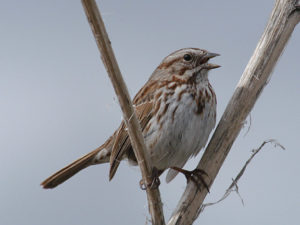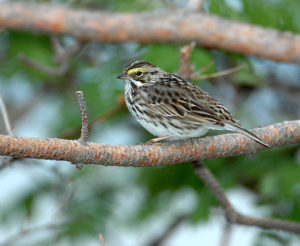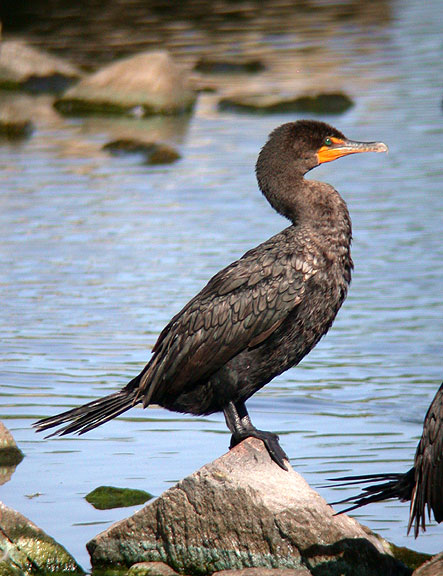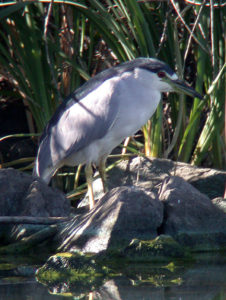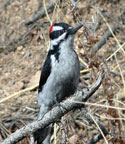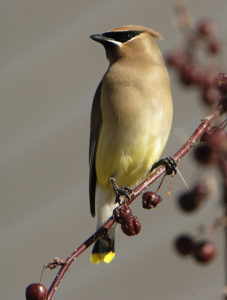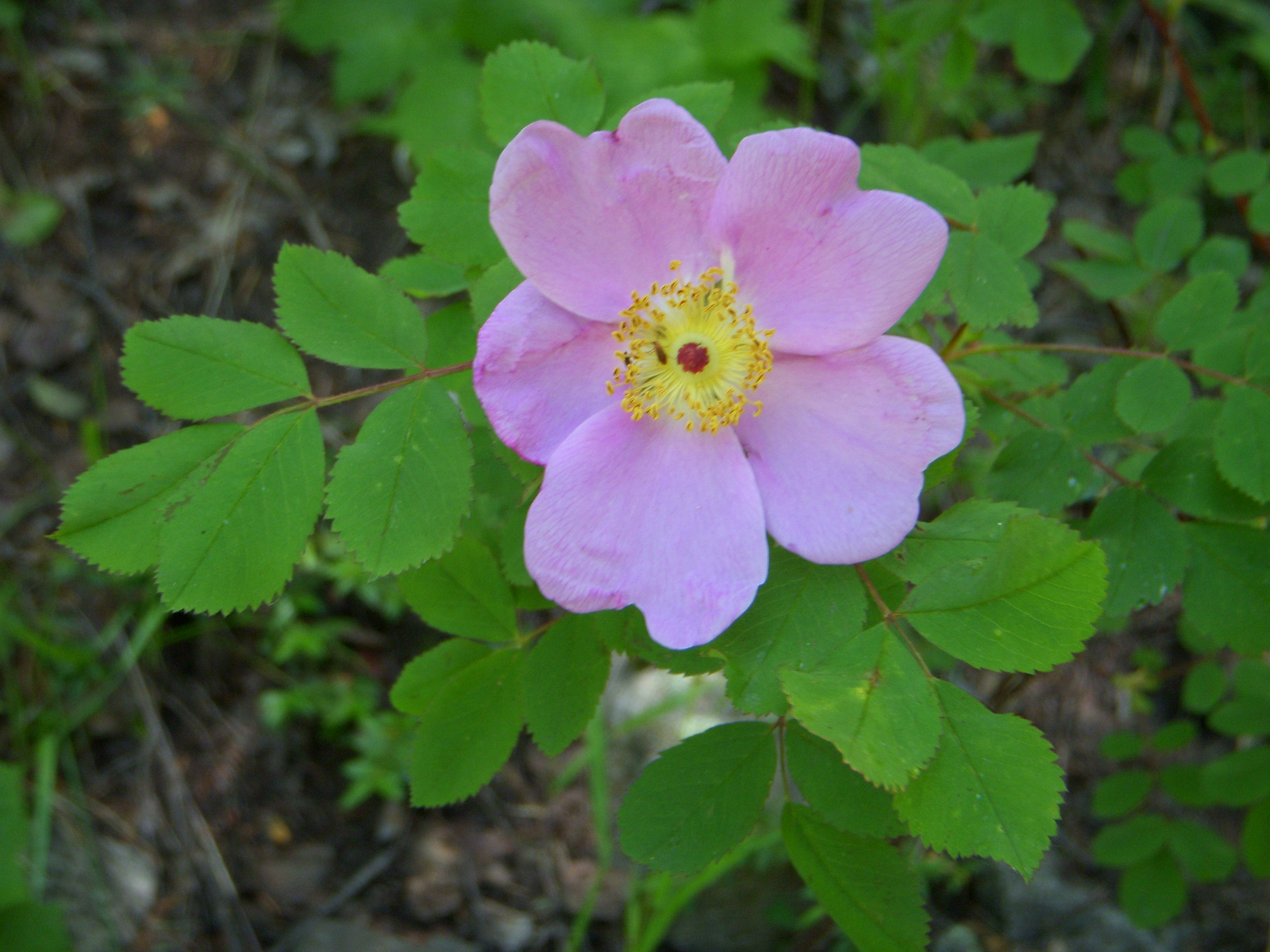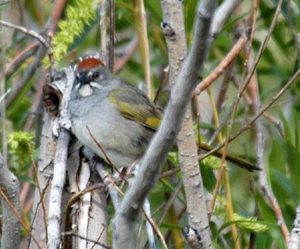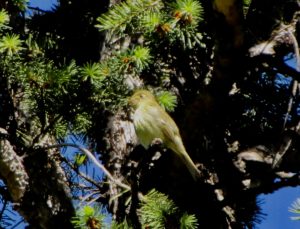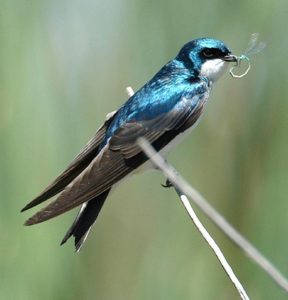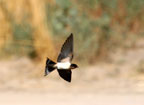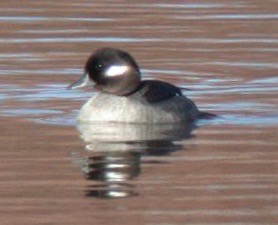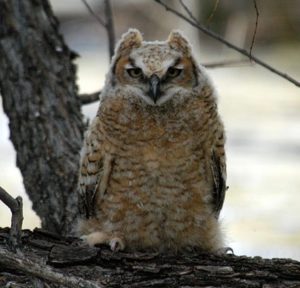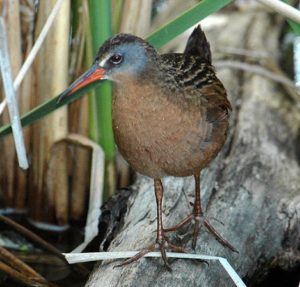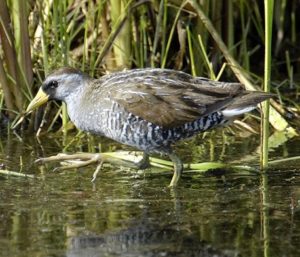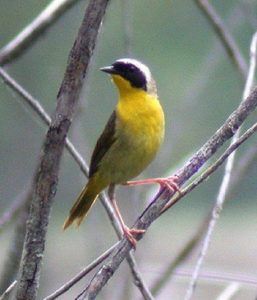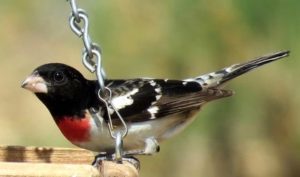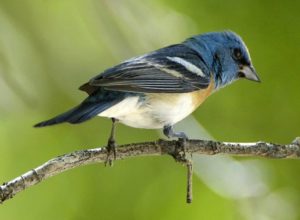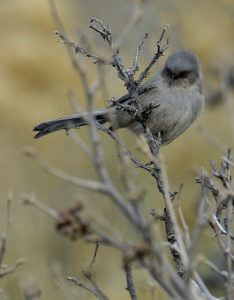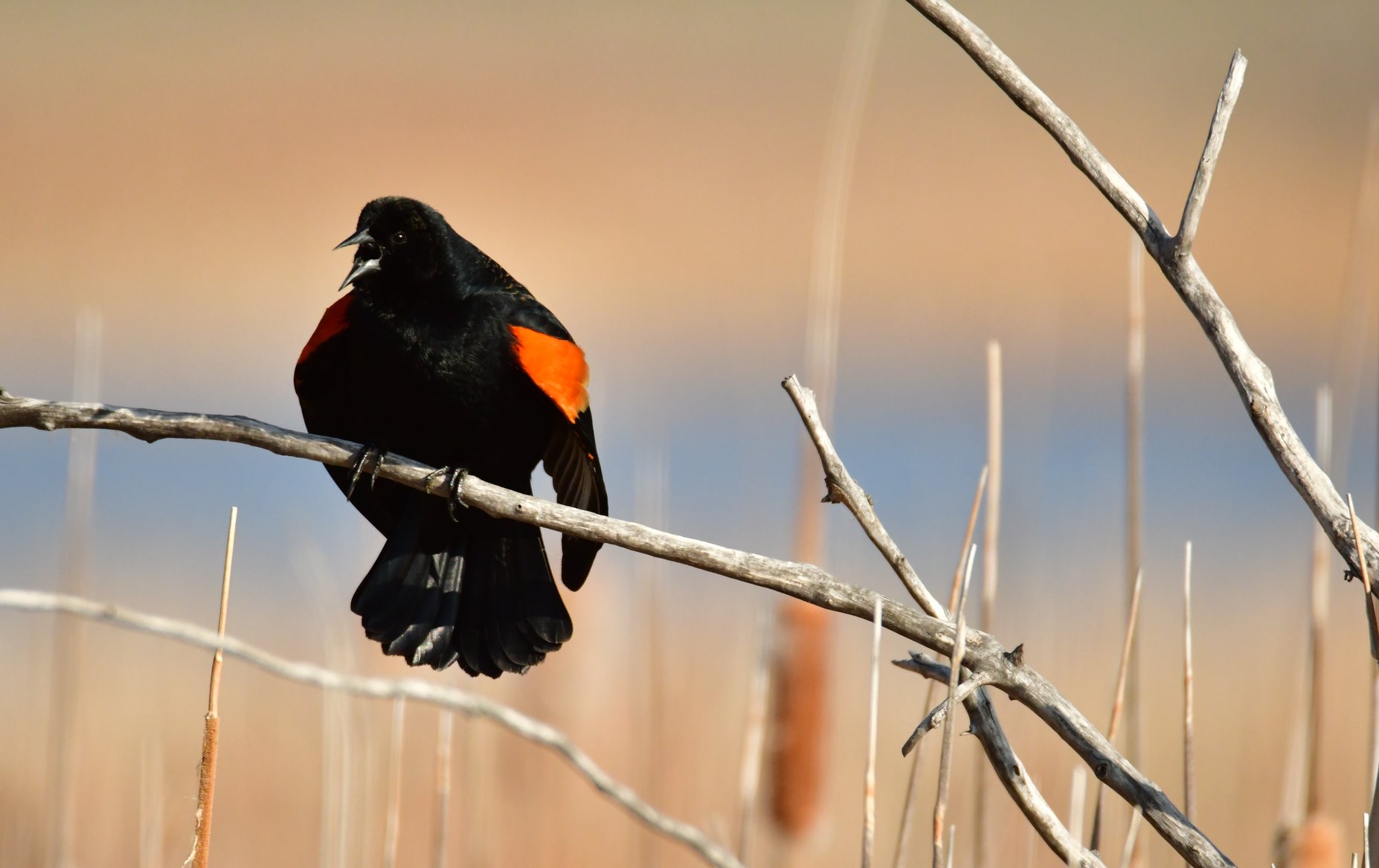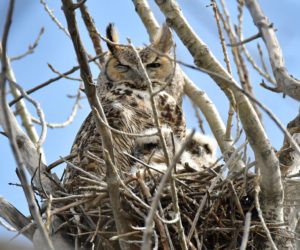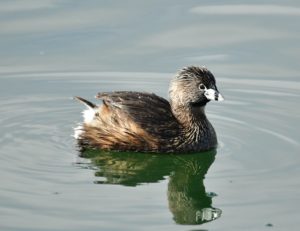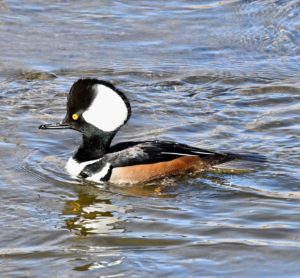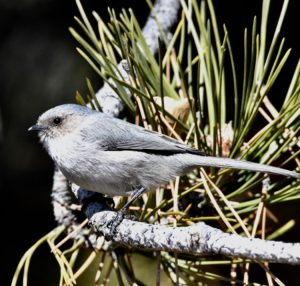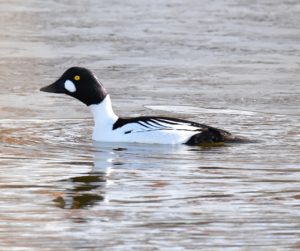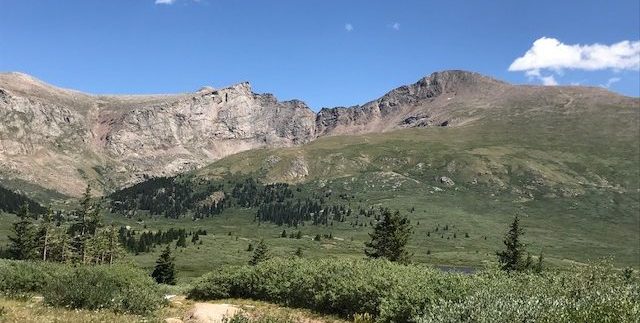
Our group of 13 intrepid high-elevation birders and wildflower enthusiasts enjoyed the FRBC Birder’s Breakfast (featuring Birds ‘n’ Beans Organic, Shade-Grown, Smithsonian Migratory Bird Center-certified “Bird-Friendly” coffee – always for sale at FRBC!) before car-pooling up to join Kimberly Beck, our wildflower expert, atop Guanella Pass. Guanella Pass is certainly popular with hikers on summer weekends as it is easily accessible from I-70 and Georgetown and from Hwy 285 and Grant. It is the gateway to Mt Bierstadt and other above timberline hikes and the parking situation definitely showed it. We were finally able to all get together under the tutelage of Kimberly and begin identifying alpine wildflowers and looking for birds.
Avian diversity is always a bit lower at altitude but we were excited to see a few more species than I anticipated. White-crowned Sparrows were our most common sighting but a few Wilson’s Warblers were also working the willows. We had a few hummingbird flyovers (including one definite male Broad-tailed) and a Clark’s Nutcracker also flew by. After just commenting about the usual lack of ducks on small alpine lakes, we were surprised to find 4 Mallards. Even more surprising was their behavior! These dabblers were diving! I was beginning to think I was in upside down world but this is actually the second time I have seen dabblers diving this year. Subsequent research revealed that, though rare, dabblers do occasionally dive for food. Another nice surprise was a juvenile Spotted Sandpiper.
Wildflower numbers were a little off this year due to the dearth of winter snowfall (and snowmelt) and overall heat and dryness. Nonetheless, Kimberly knew where to find a few and wanted us all to be able to describe what we saw before putting a name to them. I, for one, really enjoyed her methods of asking you to observe first, compare to what else you have seen and place together in families before revealing the genus and the species (where possible.) Kimberly is from Relational Rewilding Nature Guiding.
Several folks were heading off toward I-70 and Georgetown as we concluded up top but 7 of us stopped at the Three Mile Creek Trailhead on the way back toward Hwy 285 en route to FRBC. The mixed coniferous/aspen habitat revealed 7 more species in our relatively short stop.
Steller’s Jay, Common Raven, Violet-green Swallow, Black-capped Chickadee, Mountain Chickadee, Red-breasted Nuthatch, Golden-crowned Kinglet
All in all, a good time was had by all as we continued to offer our annual high elevation wildflower walk (with some birding thrown in.) Special thanks to Kimberly Beck for her expertise and refreshing enthusiasm. The mission of Relational Rewilding Nature Guiding is to foster mutually enhancing relationships between people and nature that inspire healthy ecological actions as well as personal growth. I only wish we had we had more time with her!
Chip Clouse – FRBC Manager



